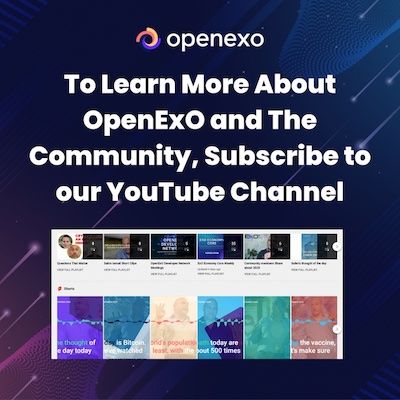
No Purpose? No Growth. No Party.
We know that the failure rate of digital transformation projects can be explained by the gap between "knowledge" and "know-how." In the real world, entrepreneurs understand what strategies they need, but many of them are unable to "ground them," so they get stuck.
Let's be honest.
How could we possibly imagine the Exponential Organizations (ExO) model not raising at least some questions when we present it to leaders or entrepreneurs?
And I'm not referring to the fact that it is yet another model imported from Silicon Valley with examples of the same big names like Apple, SpaceX, Tesla, Google, etc.
I'm simply referring to the fact that the prerequisite for adopting this new successful organizational model is the definition of the "purpose," i.e., the impact the organization wants to have in the world, the reason the company exists beyond profits.
We know that the failure rate of digital transformation projects can be explained by the gap between "knowledge" and "know-how." In the real world, entrepreneurs understand what strategies they need, but many of them are unable to "ground them," so they get stuck.
They ask you: “What does it mean to define the company's raison d’être”?
This simple question puzzles almost all entrepreneurs and to a good extent annoys them because they don’t have an answer - yet.
We need to acknowledge that the reaction is more than legitimate and understandable.
In fact, if they don't know what the "purpose" is and what it's for, how will they be able to find it, let alone implement it?
Their experience journey begins when they discover that in the ExO model, the definition of the "purpose" is mandatory. Then they find out that it must be "massive" and "transformative" simultaneously.
Their journey continues when, after the "purpose," they discover they need to define a “moonshot"!
It’s a lot.
This is why they all tend to skip or underestimate this part and jump straight to play with the other 5+5 exponential attributes.
They are much easier because at least they are more tangible and quantifiable than talking about the “raison d’être” of the organization.
So how do we avoid scaring entrepreneurs or business leaders and help them not to close the door to the ExO model?
The solution is to help them activate a new business process in the organization that will run like the others, 24/7. Like all the others, it will be subject to controls, measurements, and optimizations.
What is this process? It’s the Culture, and it’s the “culture as a business process.”
As much as the ExO Model leverages exponential technologies to grow and scale 10x more than the best competitors, its true core lies in people transformation.
There can’t be any digital or technology transformation without a "mindset upgrade" first.
Therefore the suggestion is a gradual approach that begins with implementing “culture as a business process” and defining the first ExO attribute (the MTP) to prepare the ground for the ExO Model implementation.
In this way, the organization builds the foundations of a strong corporate culture and defines its MTP. In other words, it creates the prerequisites to transform itself into an ExO successfully.
Exponential transformation is not only the creation of new tools enabled by exponential technologies, it is first and foremost a method, an approach, a mindset.
The best way to express it is through the purpose statement: the most authentic essence of the organization that aligns stakeholders toward the same shared goal and drives results and performances.
Let me give you an example (see the reference below) of a purpose statement and how it has created a massive and transformative impact in the world while creating phenomenal economic results and performances.
“Innovations for a better world” is the purpose statement of the Swiss multinational food processing equipment manufacturer Bühler.
Yes, it sounds rather generic and it looks short, but in the last 10 years, this very purpose statement oriented all the efforts of the company toward slashing the global food industry’s massive carbon footprint.
They took into consideration the following world’s grand challenges:
- one-third of the world’s energy goes into food production,
- a quarter of global carbon dioxide emissions came from agriculture,
- one-third of all food got wasted via production and distribution.
They focus on developing solutions to make production more energy-efficient and sustainable as well as profitable.
They looked broadly across the food production value chain for new technologies and business models.
Even if the purpose statement sounds generic, inside the food-processing equipment manufacturing world it was deeply meaningful, capturing the organization’s determination to reimagine food production globally to solve pressing humanitarian and environmental problems.
In the end, “innovations for a better world” couldn’t fit better in this case where their purpose served as a foundation for framing clear, cogent strategies to drive business growth (in the last decade revenues almost tripled, the workforce and the R&D spending almost doubled).
What’s the purpose of your organization? Have you already defined your personal MTP?
Enjoy this video where Peter Diamandis explains how to build a personal or a corporate massive transformative purpose.
Reference:
- Gulati, R. (2022). Deep Purpose, Penguin Business.

ExO Insight Newsletter
Join the newsletter to receive the latest updates in your inbox.









